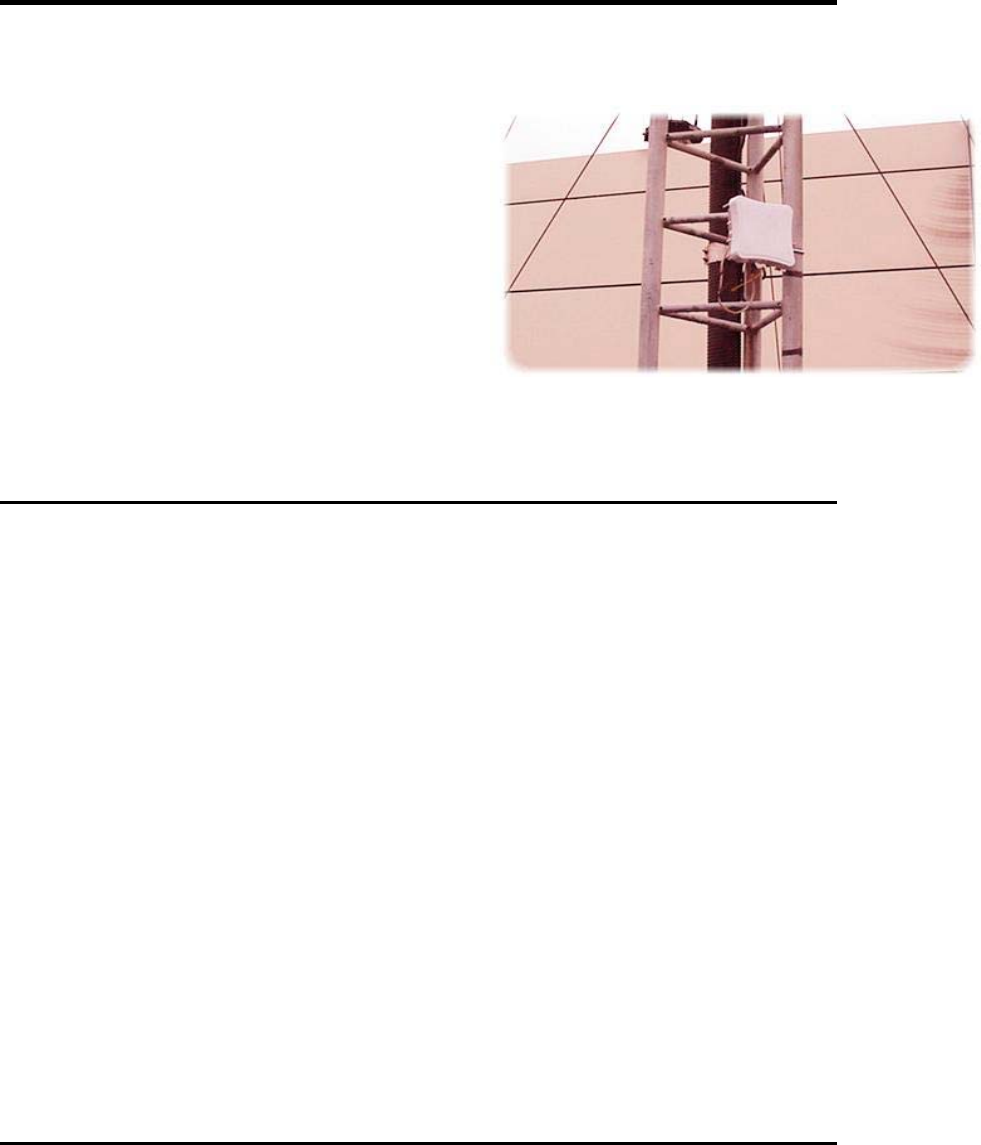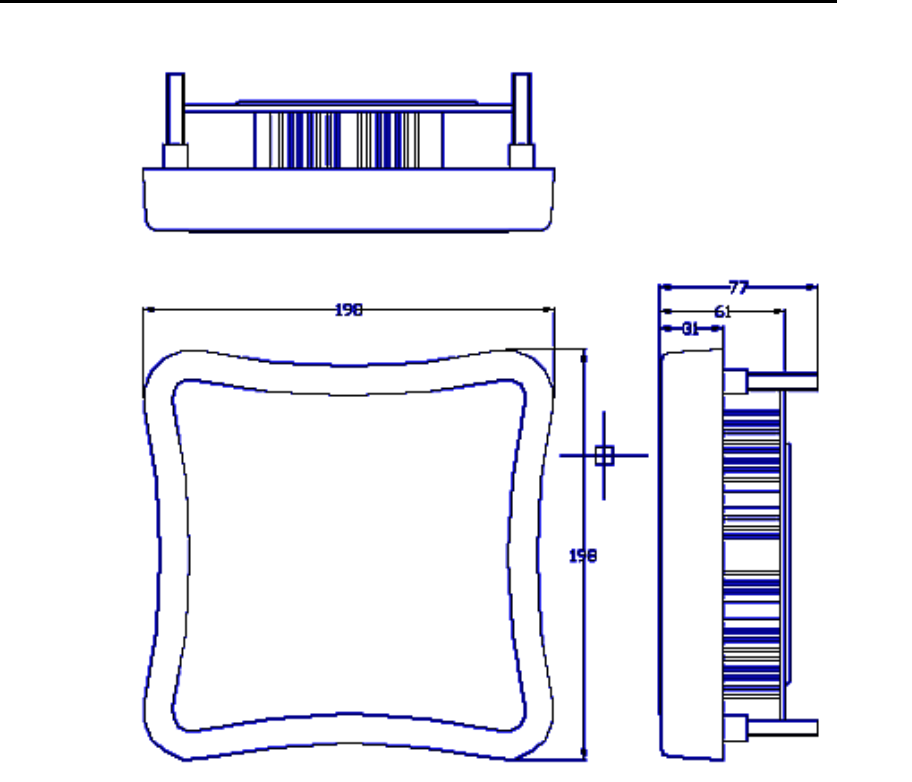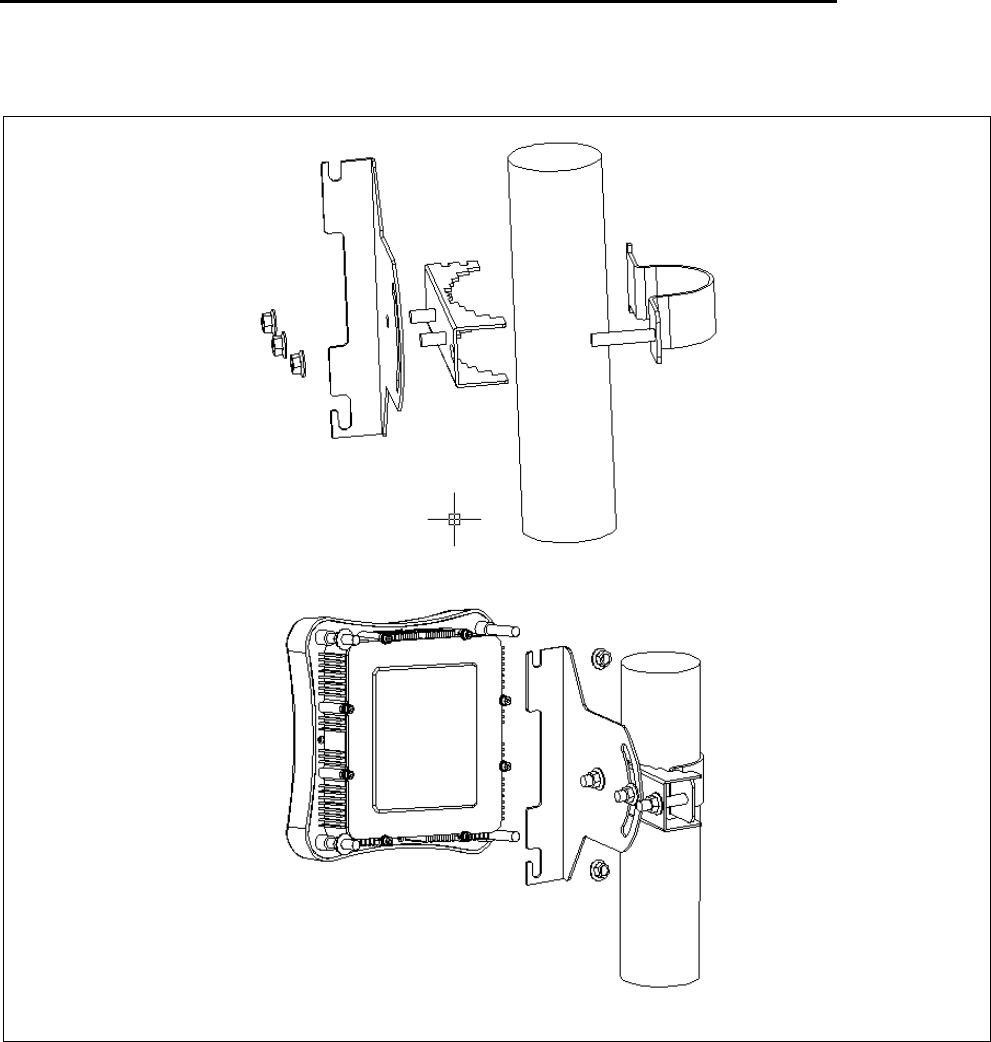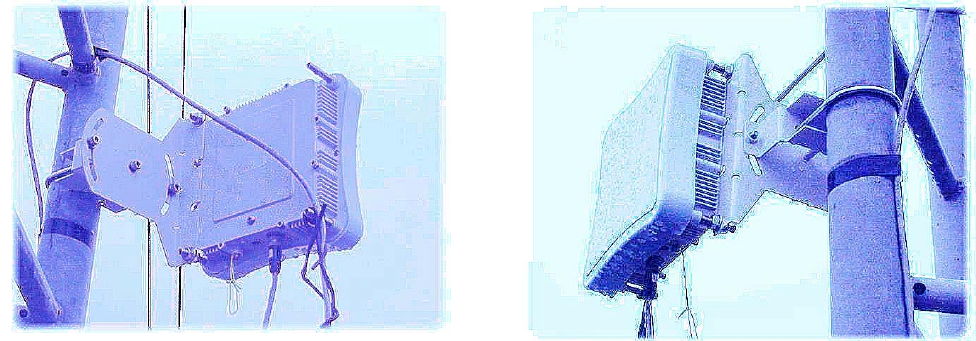Microelectronics Technology BR5811E1 WIRELESS OUTDOOR BRIDGE SYSTEM User Manual Chapter 2 Hardware Installation
Microelectronics Technology Inc WIRELESS OUTDOOR BRIDGE SYSTEM Chapter 2 Hardware Installation
Contents
- 1. USERS MANUAL
- 2. HARDWARE INSTALLATION
HARDWARE INSTALLATION

Chapter2 Hardware Installation
This chapter provides installation procedures are generally outlined as follows:
Verify system configuration
Installing the ODU
Installing the POE
Mounting and alignment the antenna
Connecting external equipment
You may need to use Web Browser to
change or set the MTIBR5811(E1) system’s
operating parameters. Refer to chapter 3,
Bridging network attachment and configuration, for more information.
2-1 Unpacking the Equipment
The tools required for unpacking the system equipment are:
Utility knife
Clean, flat working surface
Open the shipping containers, carefully remove the equipment and place it on a
clean, flat working surface. Save the shipping and packing material in case the
equipment has to be returned.
Check the equipment and installation kits against the packing list to ensure that
the equipment part numbers, parts, and ancillary equipment included in the
shipment match what is specified on the packing list. Shipments consist of an
ODU and an installation kit in one container. Verify the configuration as
described in verifying the System Configuration. If there are discrepancies
between the packing list and the equipment received, contact your sales
representative.
Inspect the equipment for any type of shipping damage. If any part of the
shipment is damaged, contact your sales representative for repair or
replacement instructions.
2-2 Verifying the System Configuration
The MTIBR5811(E1) system consists of an Outdoor Unit (ODU), POE and an
installation kit.

2-3 Installation Kit
Most of the materials needed for installation are supplied with the system. Some
tools and equipment must be supplied by the user. Table lists materials in a
typical installation kit. Refer to the packing list for a description of the exact
contents.
Table Installation Kits (for 2” Steel or Stainless Steel Tube)
Item Description Quantity
1 M-TYPE PLATE 1EA
2 L-TYPE PLATE 1EA
3 U-TYPE PLATE 1EA
4 NUT FLANGE M8-1.25 SS (PLATE ASM) 3EA
5 NUT FLANGE M8-1.25 SS (HOUSING ASM) 4EA
2-4 Grounding
Proper grounding of equipment and structures is essential to prevent electrical
damage to the MTIBR5811(E1) system.
Grounding of all equipment at a radio site is required. Without proper grounding,
voltage potentials between components of the system can cause electrical
damage when interconnecting cables are installed.
It is recommended that the ODU be installed with lightning rod protection. Also,
to avoid surge current caused by lightning circulating to the equipment earth
system, connect the equipment earth system (true ground) to the lightning rod
ground.
Please connect the ground node to the existing ground.
Note: Ground wires and hardware are not provided in the installation kit.
2-5 ESD Protection
ESD (electrostatic discharge) can damage electronic components. Even if
components remain functional, ESD can cause latent damage that results in
premature failure. Personnel and equipment must be properly grounded.
Always wear proper ESD grounding straps during equipment installation,
maintenance and repairs. Connect your ESD grounding strap to the ESD
connector.

2-6 Outline of MTIBR5811(E1)

2-7 Installing the ODU
The MTIBR5811(E1) can be mount on a 2” Steel or Stainless Steel Tube. You can
reference the Figure.
guration
You can refer the photo here for installation.
ODU Confi


2-8 Connecting the cable
An
power to the ODU and allows Ethernet data to flow between Stations with Bridge
C power is
2-9 Align the Antenna (TBD)
Ethernet cable connects the ODU to the POE output port. The cable connects
system. Another Ethernet cable connects the station to POE input port. A
applied to the bridge system by connect it to POE AC adapter.
Notices
The RSSI BNC connector is still not function well now. Please
use the RSSI reading from the statistics window in WEB -base
browser.
Antenna alignment is performed with both the near-end and the far-end
ile monitoring the RSSI
alignment v her the RSSI voltage reading is, the
voltage reading is from 0 to 3.28VDC,
e resolution is 256 ns.
sure optimum performance, the main lobe of the antenna must be aligned
the antenna through the range of radiated power
n be positively identified. Each side lobe is approximately 20 dB lower than
be as you move away from the main lobe.
men dure is applicable to both protected and
otions. Align the antenna as follows:
ced tial alignment does not produce the correct
ng.
sult your path ca n and adjust the radio’s attenuation level, so do
eed the max
idg far end is operational.
Bri ve the protective cap from the RSSI BNC
connector.
4. Connect a voltmeter to the RSSI connector and set the voltmeter to
measure VDC.
uth direction. Monitor the voltmeter and
locate the position where the voltage is minimum (null) and record the
ot the antenna in the elevation direction. Pivot
ltage is minimum on the voltmeter
terminals operating. The antenna position is adjusted wh
for antenna
stronger the signal. The range of the RSSI
oltage. The hig
and th divisio
Caution: To en system
with the center of the far end antenna. Rotate
so the main lobe ca
the preceding lo
This antenna align t proce
non-protected system c nfigura
Note: Repeat this pro ure if the ini
RSSI readi
1. Con lculatio
not exc imum receiving signal level.
2. Verify that the Br e at the
3. At the near-end dge, remo
5. Pivot the antenna slowly in the azim
reading.
6. Monitor the voltmeter and piv
the antenna to the position where the vo
and record the reading.

7. Repeat these steps as necessary to get an accurate reading.
8. Tighten all fasteners and check that the null has not changed. If the null has
changed, repeat the procedure until the null is maintained after tightening
the fasteners.
9. Disconnect the voltmeter and replace the RSSI protective cap.
Note: The signal level over the link is not optimal until both antennas are
correctly aligned.
2-10 External Antenna For BR5811(E)
If you use the external antenna option, you can follow the antenna installation guide to
fixed the antenna and use the RF cable in the installation kit to connect the Bridge and
antenna.
External antenna Specifications:
KBNT5826-13 5.8GHz WLAN 26 Grid Parabolic Antenna
Frequency: 5725-5875MHz
Gain: 26 dBi
Impedance: 50 .
Beam width: H6 V8
Polarization: Linear, Vertical
Front to Back Ratio: > 30 dB
Maximum Input Power: 200W
Lightning Protection: DC Ground
Connector: N type female
VSWR 1.4
Dimension: Caliber 520 x 450 mm, 2.6kgw
Rated Wind Velocity: 60 m/s
Mounting Hardware: Φ30-Φ60